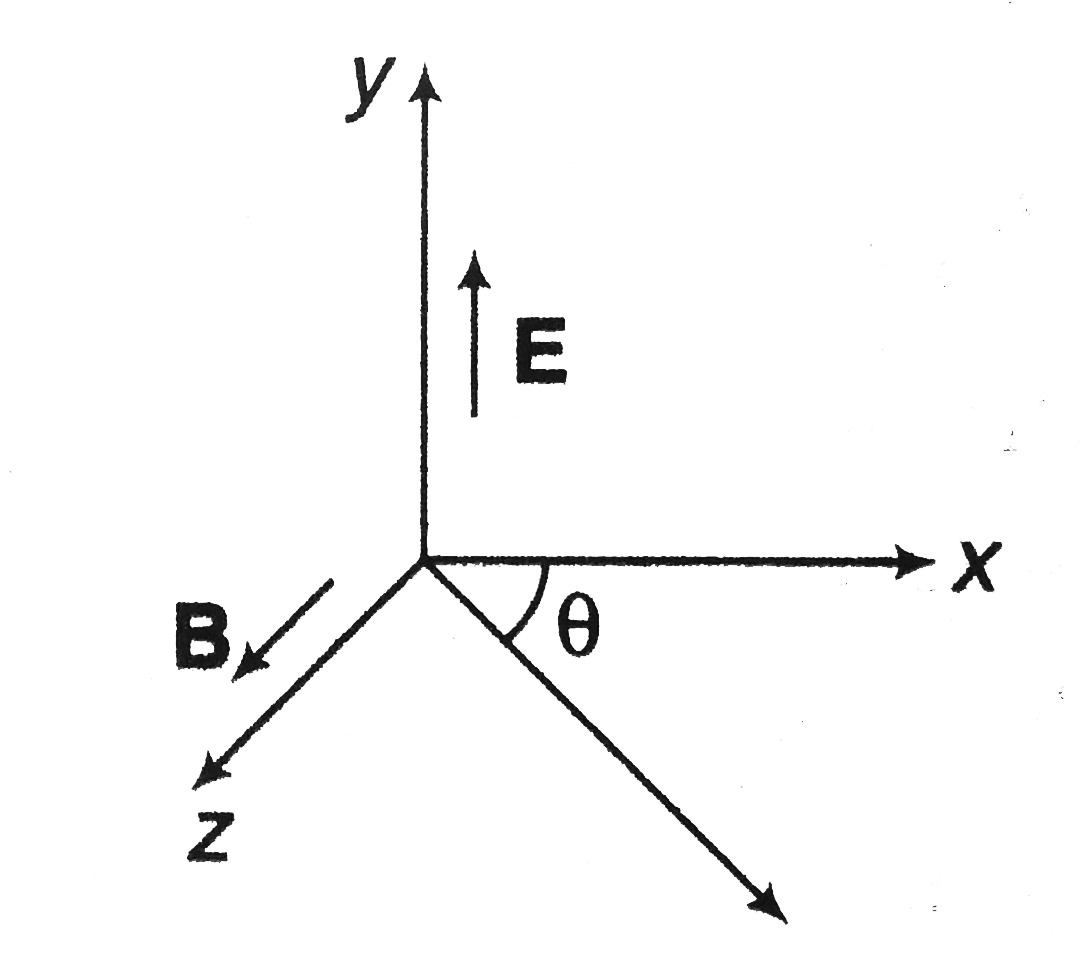Non-relativistic protons move rectinearly in the region of space where there are unifrom mutually perpendicular electric and magnetic fields with E=4.0kV/m and B=50mT. The trajectory of the protons lies in the plates xz (Fig) and forms an angle φ=30∘ with the x axis. Find teh pithc of the helical trajectory along which the protons will move after the electric field is swiched off.
When the electric field is swichted off, the path followed by the particle will be helical. And pitch, Δl=v∣∣T, (where v∣∣ is the velocity of the particle, parallel to →B, and T, the time period of revolution.)
=vcos(90−φ)T=vsinφT
=vsinφ2πmaB (as T=2πqB) ...(1)
Now, when both the fields were present , qE=qvBsin(90−φ), as no net force was effective on the system.
or, v=EBcosφ ....(2)
From (1) and (2), Δl=vEB2πmqBtanφ=6cm.
Topper's Solved these Questions
- ELECTRODYNAMICSBOOK - IE IRODOV, LA SENA & SS KROTOVCHAPTER - ELECTRODYNAMICSEXERCISE - Electromagnetic Induction
84 Videos
- ELECTRICITY AND MAGNETISMBOOK - IE IRODOV, LA SENA & SS KROTOVCHAPTER - ELECTRICITY AND MAGNETISMEXERCISE - All Questions
6 Videos
- ELECTROMAGNETISMBOOK - IE IRODOV, LA SENA & SS KROTOVCHAPTER - ELECTROMAGNETISMEXERCISE - All Questions
24 Videos
Similar Questions
Non-relativistic protons move reactilinearly in the region of space where there are uniform mutually perpendicular electric and magnetic fields with E and B. The trajectory of the protons lie in the plane X-Y as shown in Fig. 1.107 and forms an angle ϕ with X-axis. Find the pitch of the helical trajectory along which the protons will move after the electric field is switched off.

View SolutionNon-relativistic protons move reactilinearly in the region of space where there are uniform mutually perpendicular electric and magnetic fields with E and B. The trajectory of the protons lie in the plane X-Y as shown in Fig. 1.107 and forms an angle ϕ with X-axis. Find the pitch of the helical trajectory along which the protons will move after the electric field is switched off.

View SolutionProtons move rectilinearly in the region of space where there are uniform mutually perpendicular electric and magnetic fields E and B. The trajectory of protons lies in the plane xz as shown in the figure and forms an angle 9 with x-axis. Find the pitch of the helical trajectory along which the protons will move after the electric field is switched off.

View SolutionProtons move rectilinearly in the region of space where there are uniform mutually perpendicular electric and magnetic fields E and B. The trajectory of protons lies in the plane xz as shown in the figure and forms an angle 9 with x-axis. Find the pitch of the helical trajectory along which the protons will move after the electric field is switched off.

View SolutionA non-relativistic protons beam passes without diviation through the region of space where there are unifrom transverse mutually perpendicular electric and magnetic fields with E=120kV/m and B=50mT. Then the beam strikes a grounded target. Find the force with which the beam acts on the target if the beam current is equal to I=0.80mA.
View SolutionA non-relativistic proton beam passes without deviation through a region of space where there are uniform transverse mutually perpendicular electric and magnetic fields with E=120kVm−1andB=50mT. Then the beam strikes a grounded target. Find the force which the beam acts on the target if the beam current is equal to i=0.8mA.
Mass of protons =1.67×10−27kg.
View SolutionA non-relativistic proton beam passes without deviation through a region of space where there are uniform transverse mutually perpendicular electric and magnetic fields with E=120kVm−1andB=50mT. Then the beam strikes a grounded target. Find the force which the beam acts on the target if the beam current is equal to i=0.8mA.
Mass of protons =1.67×10−27kg.
View SolutionA proton of mass m=1.67×10−27kg moves uniformly in a space where there are uniform, mutually perpendicular electric and magnetic fields with Ez=5kV/m and Bx=40mT at an angle ϕ=60∘ with the x-axis in the xy-plane. Find the pitch of the trajectory after the electric field is switched off.
View SolutionA proton beam passes without deviation through a region of space where there are uniform transverse mutually perpendicular electric and magnetic field with E and B Then the beam strikes a grounded target. Find the force imparted by the beam on the target if the beam current is equal to I .
View SolutionA proton beam passes without deviation through a region of space where there are uniform transverse mutually perpendicular electric and magnetic field with E and B Then the beam strikes a grounded target. Find the force imparted by the beam on the target if the beam current is equal to I .
View Solution
